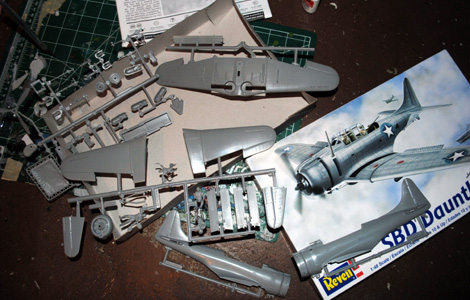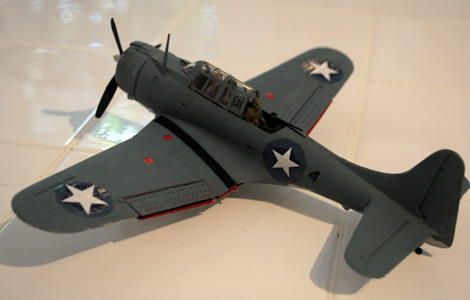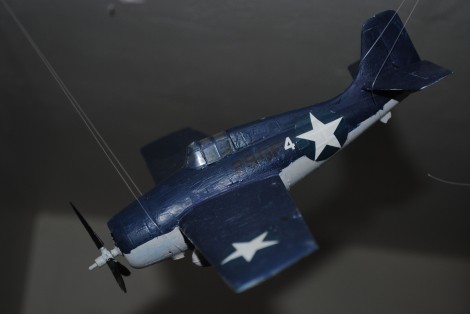Fantastic Plastic
Dive bombers, fighters, and trainers, all hanging from a bedroom ceiling
![]()
Time was when almost every boy knew how to carefully lower a bubble canopy to a P-51 Mustang, eyeball a fuselage to make sure the wings were straight on a P-47, or perhaps line up the Luftwaffe cross on the wings of a Ju-88. All done with glue-smeared and paint-stained fingertips. Today, plastic models have given way to Xboxes and PlayStations.
I’ve collected models since childhood. They spent decades stored in cardboard boxes, following me from move to move. Once we settled back in Florida, I finally unpacked them and carefully shelved the kits above my father’s old worktable, where he had once built museum-quality ship models that were auctioned at Sotheby’s. My airplanes were never gallery-worthy, but they were still a pleasant reminder of my youth.
Years ago, when I began working for Air & Space as an editor, I found those old plastic models served me in another way. Spend hours of frustration painting cockpit details or studying the various struts of a Rube Goldberg F4F Wildcat landing gear trying to get it to a) not collapse, and b) not make the model tilt drunkenly to one side, and you find you can start to recognize aircraft simply by a propeller spinner, a gear door, or a wing — a skill that became valuable when editing photo captions, for instance. A chin turret on a B-17? It’s obviously a “G” model. A two-door nose gear on an F-16? Why, that’s the prototype YF-16 and not a production “A” model.
It warmed my heart when my then-nine-year-old son Ian caught the bug and started building kits from my dusty collection. First an F4U Corsair, then the inevitable P-51. And, without prompting, the day came when he wanted help hanging the planes from his bedroom ceiling — something I, and most of my friends, had done 30-odd years earlier, but few kids do today. Pretty soon a de Havilland Mosquito had joined the formation behind a Martin B-26, while a North American T-28, Republic P-47D, and Lockheed P-38J flew a combat air patrol over his bunk bed. Now age 11, his skills have improved, and he’s currently working on a Douglas SBD Dauntless — a kit I also built when I was his age — that features a retractable landing gear, dive flaps, and a droppable bomb.
The English company Airfix began producing plastic kits in 1947, but it was its 1953 Supermarine Spitfire that is perhaps best known, and beloved, by aircraft modelers. Check out this excerpt from the first episode of the BBC series James May’s Toy Stories, in which the host enlists a crew of kids to build a full-scale Spitfire model, molded in the form of the Airfix kit:
American companies like Lindberg, Revell, and Monogram were staples of my own childhood air force, later to be joined by the excellent kits of Japanese companies like Hasegawa and Tamiya. The earliest plastic kits were rudimentary, with sometimes questionable proportions and ridiculous steam locomotive-appropriate rivets festooning fuselages and wings. But they were only a few bucks, well within a typical suburban allowance. Todays airplane modelers are typically my age, and the high-end kits are bought with twenties. Inside, they’re nearly perfect technical representations, with recessed panel lines and laser-etched metal accessories for fine details, like the thin metal frame of a Head Up Display. Some, especially large-scale warbirds, like the latest 1/32 scale jets, can run hundreds of dollars.
As of tonight, the Dauntless is painted, and has done some practice bombing runs in the living room. Soon, it’ll take its place hanging in formation, rolling in on an imaginary Japanese destroyer sailing the carpet below.
/https://tf-cmsv2-smithsonianmag-media.s3.amazonaws.com/accounts/headshot/Sotham_photo.jpg)



/https://tf-cmsv2-smithsonianmag-media.s3.amazonaws.com/accounts/headshot/Sotham_photo.jpg)